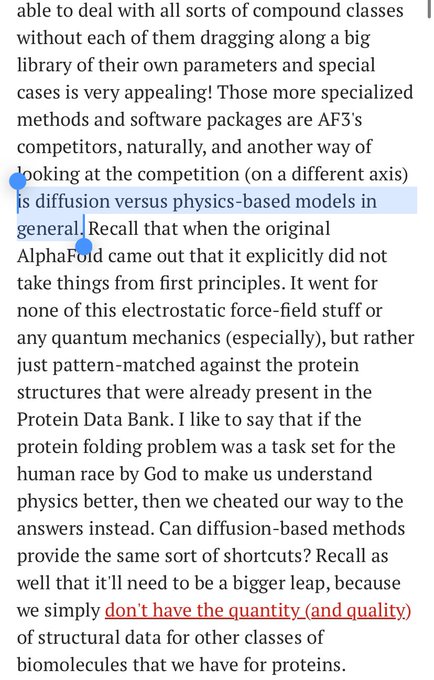Good take as always. I don’t think this axis makes sense really though. I would argue a diffusion model is more physics based than a lennard jones forcefield. Harmonic approximation about the minima is in every physics text book but I’ve never seen a 1/r^12 repulsion.
5
4
39
Replies
Learnt from experiment. vs learnt from quantum mechanical data is a sensible axis but it seems now that they’ve trained on the whole PDB that it will need every new source of training data possible to keep improving.
0
0
2
@TimothyDuignan
As I understand it, the LJ potential worked well for Argon in gas phase as well as hard spheres. More complex systems, not so much.
1
0
1
@CalcCon
Yeah I think part of the original motivation was you could square the 1/r^6 so it was computationally efficient as well.
1
0
2
@TimothyDuignan
1/r^12 is a commonly used potential to model gas phase interactions. I presume it can be explained by perturbation theory of dipole interactions but I am not sure.
1
0
0
@YigithanGediz
Yes apparently Lenard jones just fit it to the noble gas phase data. Also used because it’s computationally cheap. Never seen a derivation
0
0
0
@TimothyDuignan
Model-free physics is still physics, just happens to be broken into billions of parameters
0
0
0
@CalvinMccarter
Yes good point but I would argue MD with LJ doesn’t tell you this either. LJ 1/r^6 parameters don’t agree with first principles c6 coefficients. So it can’t really tell you about the physical causes. It does give more physically plausible trajectories though that’s true.
0
0
1





